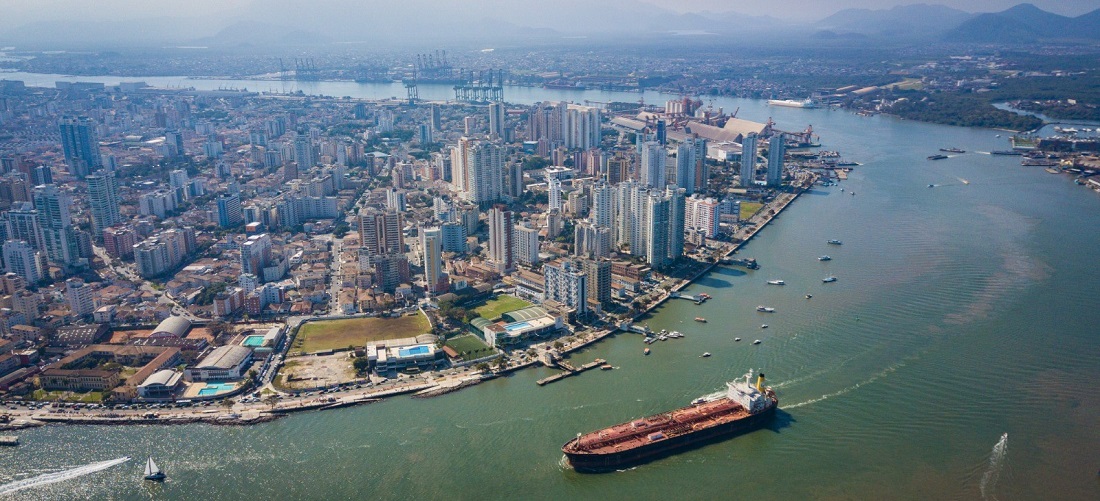
Brazil studies reduction of soybean moisture content at Port of Santos
Apr, 14, 2023 Posted by Gabriel MalheirosWeek 202318
To improve the quality of soybean exports and reduce losses, the Ministry of Agriculture and Livestock (Mapa) wants to change the grain moisture content established in Normative Instruction 11/2007 from 14% to 13%. The ministry elaborated a proposal to rethink the grain classification chart, and the discussion is still ongoing. Soybeans are the commodity most exported at the Port of Santos.
According to the ministry, soybean moisture content refers to the limit of free water in the product sent for export. The higher the humidity, the greater the chance of the cargo going to waste. This happens after the product’s fermentation, which takes on a dark brown color and the possibility of contamination by mycotoxins. Possible consequences are financial losses and the return of the goods in some cases.
According to experts, products shipped at temperatures above 26°C and with humidity above 13% tend to deteriorate on journeys longer than 45 days. As the transit time from the Port of Santos to China can exceed the 40-day mark, with the possibility of queues for berthing, the chance of cargo loss should not be discarded, argued the ministry.
For instance, the United States already requires soybeans to have a moisture content of 13%. Representatives of marine insurance, however, argue for an even bigger cut—12%—to prevent losses. In Brazil, Normative Instruction 11/2007 from Mapa establishes what the content should be. Article 4, Section 4 “defines that the humidity must be determined, but it will not be used for classification purposes, with the maximum content percentage being 14%.”
However, in February 2022, a public consultation was opened on the proposed revision to the classification standard for soy and its by-products. In addition to the stratification of the commodity into types, limits for defects and moisture content, protein, and oil are among the issues that the new standard can change.
Mapa received over a thousand contributions during the public consultation period, which lasted 90 days. A seminar was also held to discuss the issue, in Brasília, in September last year. In the ministry’s view, the reduction in the percentage of moisture in soy represents a gain in the quality of the stored commodity and harmonization with international standards.
However, if the new content limit is approved and soy moisture becomes 13%, grain producers and buyers will need to use technologies to reach these levels, as drying will become an even more important step for product conservation.
Port of Santos
According to estimates, 25.4 million tonnes of soybeans will be transported through the Port of Santos this year, the leading international trade asset in the nation. In addition, the National Supply Company (Conab) estimates that 151.4 million tons of the product will be produced nationally.
Last year, 25.5 million tonnes of soybeans were shipped from Santos alone. The volume represents a growth of 9.5% compared to shipments made in 2021.
Also according to Conab, in the 2021/2022 harvest, more than 125.5 million tonnes of soybeans were produced in Brazil. Of this total, more than 103.1 million tonnes of the grain were harvested in the country’s Midwest (Centro-Oeste) region.
Source: A Tribuna
To read the original news report, see: https://www.atribuna.com.br/noticias/portomar/governo-federal-estuda-reducao-da-umidade-da-soja-que-tem-maior-volume-no-porto-de-santos
-
Trade Regulations
Feb, 27, 2025
0
Trump Confirms Tariffs on Mexico, Canada, and China Will Take Effect as Scheduled
-
Economy
Jul, 26, 2024
0
Brazil registers record revenue, 9.08% growth
-
Other Logistics
Feb, 24, 2025
0
São Paulo Approves Tender Notice for Santos-Guarujá Tunnel Concession
-
Shipping
Nov, 04, 2024
0
CMA CGM announces fresh America rates



